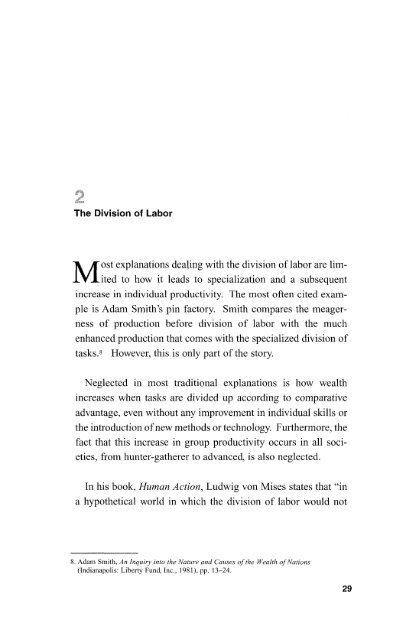Not a Zero-Sum Game - Ludwig von Mises Institute
Not a Zero-Sum Game - Ludwig von Mises Institute
Not a Zero-Sum Game - Ludwig von Mises Institute
Create successful ePaper yourself
Turn your PDF publications into a flip-book with our unique Google optimized e-Paper software.
The Division of Labor<br />
ost explanations dealing with the division of labor are lim-<br />
M ited to how it leads to specialization and a subsequent<br />
increase in individual productivity. The most often cited example<br />
is Adam Smith's pin factory. Smith compares the meagerness<br />
of production before division of labor with the much<br />
enhanced production that comes with the specialized division of<br />
tasks.8 However, this is only part of the story.<br />
Neglected in most traditional explanations is how wealth<br />
increases when tasks are divided up according to comparative<br />
advantage, even without any improvement in individual skills or<br />
the introduction of new methods or technology. Furthermore, the<br />
fact that this increase in group productivity occurs in all soci-<br />
eties, from hunter-gatherer to advanced, is also neglected.<br />
In his book, Human Action, <strong>Ludwig</strong> <strong>von</strong> <strong>Mises</strong> states that "in<br />
a hypothetical world in which the division of labor would not<br />
8. Adam Smith, An Inquiry into the Nature and Causes of the Wealth oj Nations<br />
(Indianapolis: Liberty Fund, Inc., 1981), pp. 13-24.

















